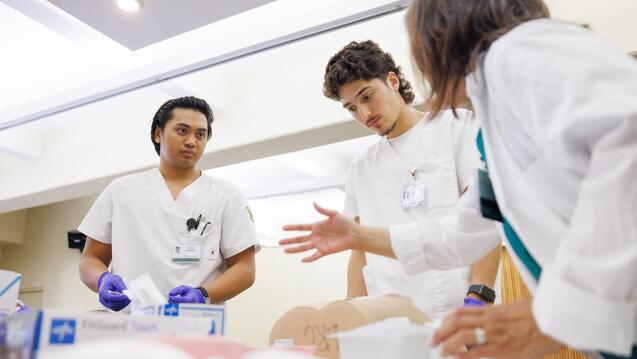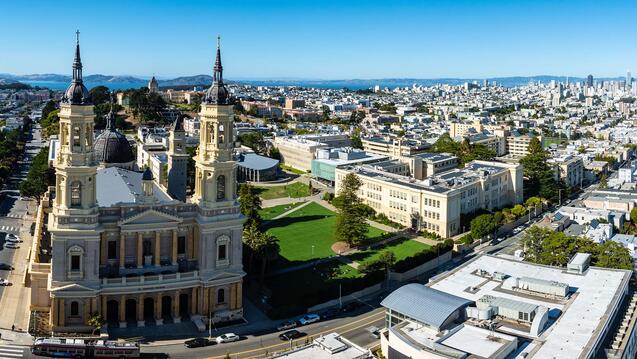USFers Help Japanese Rebuild After Earthquake and Tsunami
University of San Francisco architecture students are behind the design of a new community center being built in northeastern Japan, where residents are still recovering from a devastating 2011 earthquake and tsunami. The center will serve as a designated flood refuge to more than 100,000 families, still rebuilding their homes, neighborhoods, and communities.
Built to withstand a tsunami
The student-designed center is in Ishinomaki city, one of the regions most severely devastated by a 9.0-magnitude earthquake and resulting 20-foot tsunami waves that killed more almost 16,000 and flattened 300,000 buildings, damaged another one million structures, and left 25 million tons of debris in its wake when it struck Japan on March 11, 2011.
"To local residents, there's always the looming backdrop of tragedy because of the staggering death toll. This project has the transformative energy to instill hope through literally building community," said Matt Peek, USF adjunct professor of architecture and community design. Peek created the undergraduate class, Japan Tsunami Recovery last year, with the idea that USFers could play a part in Japan's recovery. The class was chosen to be part of the project because of Peek's award-winning flood-proof architectural work.
More than a place to escape a disaster
The center is on high ground in a residential area and benefits from a galvanized steel frame, making it resistant to corrosion and allowing it to withstand seismic events and tsunami-force waves. But it's more than a refuge to be thought of only in the event of a disaster, USFers designed the building to be used year round, with space for a daycare, tutoring services for elementary school children, a library, and computer lab.
"The goal was to create a community center that is more of a 'community home' than an institutional building. One that fits in rather than stands out. A place that encourages togetherness, inward reflection, safety, and a place to create fond new memories," said Nathaniel Eck '12, one of the dozen students in Peek's Japan Tsunami Recovery course.
Japanese design integral
Eck and other classmates worked with Architecture for Humanity (AfH) — which constructs buildings and provides access to water and power in areas that have been devastated by poverty, conflict, or natural disasters — to source Japanese wood for the center's construction, and incorporate Japanese architectural sensibilities into the design, from sliding paper-screen walls and bamboo louvers to coastal shipbuilding elements like steel posts that resemble ship masts. AfH is the the final fundraising phase of the project and hopes to break ground on the center in the coming months.
The class also designed AfH's new Ishinomaki headquarters, with offices, galleries, and housing for visiting architectures, which will go a long way to helping the nonprofit in its mission to rebuild the area.
Know someone with a powerful USF story? Let us know! usfnews@usfca.edu | Twitter @usfca


